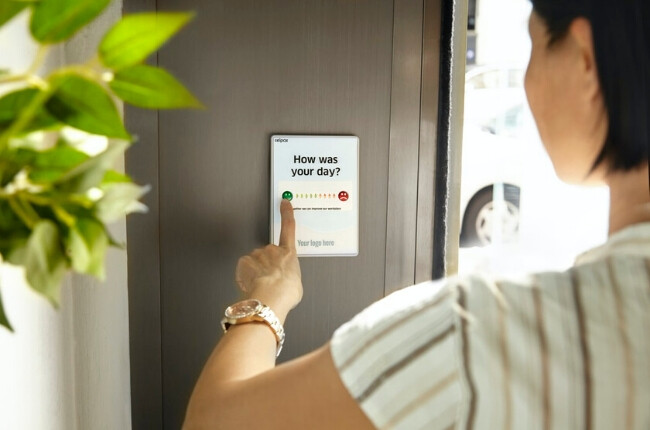Uncertainty around what is right and wrong when it comes to marketing and public relations has been a constant source of stress for PR professionals during the COVID-19 pandemic. Initially, many brands opted to hit the ‘pause’ button. Now, however, as brands look to recover from the pandemic, marketers and communications professionals are seeing that with creativity, empathy, and some well thought out strategic planning, PR can prove itself invaluable.
Knowing exactly what to do feels frightening to many. Get it wrong, and your brand could suffer damage like never before. But get it right, and your brand could be remembered positively for years. The important thing to remember is that there is no silver bullet, and no single solution or correct way to respond. Instead, empathy, consideration and authenticity must be applied to each unique business.
There’s also a question of whether contributing to the COVID-19 conversation is helpful or appropriate. If you’re steering clear of any coronavirus-related coverage, you might also be concerned that journalists don’t want to hear about anything that isn’t related to the pandemic. While many journalists have been put on strict ‘COVID-19 only’ sections, many are eager to hear about other stories that will give readers a break or a glimmer of positivity.

So, what should PR professionals be focusing on during this sensitive time? Which PR tactic will make your campaigns a success during this recovery phase? We’ve got a few PR hacks up our sleeve.
Rely on Thought Leadership
Thought leadership is integral to many brand communication strategies. There is still opportunity to utilize this approach during and while recovering from the pandemic in order to raise brand awareness, demonstrate authority and earn trust.
Successful thought leadership during a crisis relies on authenticity and honesty. Without these, any opinions or ideas will not be trusted and can have a negative impact on your brand. At such a sensitive time, transparency is valued greatly. All messages must be based on truth and ring true to your brand DNA, while also being sensitive and sympathetic to the situation.
There’s also a balance between speaking up for what is right and keeping your voice down. Insights that inform and add to the conversation are helpful but shouting too loudly can attract negative attention from your audience. There’s a risk of being seen as ‘all talk’ and no substance, so ensure any communications include your own statistics, research and/or customer testimonials. This will add credibility to what you’re saying.
One of the best ways to maintain communications with your audience without sounding too self-promotional is to leverage a thought leader within your company who can speak on behalf of your brand. Oftentimes, this is your CEO or an SVP who already has a presence on their personal social media channels. By posting about your brand on their personal Twitter and LinkedIn profiles, they garner trust with their followers who are often part of your brand’s target audience. This is key to humanizing your brand. Beyond social media, this thought leader can participate in media interviews, offering your brand’s solutions for consumers coming out of COVID-19. If you haven’t noticed already, your journalist contacts are hungry for positive content and you are more likely to earn media coverage if they can interview your brand’s CEO. Get creative with you pitches. Ensure you catch their eye when they sift through their emails and DMs. Offer an exclusive interview, rather than sending through a stale press release.
Measure the Impact
Public relations and communications professionals are under pressure to demonstrate value, which means measurement is crucial at this time. If you can’t measure it, you can’t manage it – which means outcomes and business results of each PR campaign or project need to be measured properly.

Using the right framework is an essential starting point. If you get the foundation of your measurement right, the rest will follow. AVEs (Advertising Value Equivalent) are simply placebos – they don’t give an accurate representation of impact or effectiveness. In contrast, the industry standard AMEC Integrated Evaluation Framework (AMEC IEF), which was created with the help of LEWIS, gives communications professionals the right insights to demonstrate value and business impact. When combined with analytics tools, like Google Analytics, measurement and evaluation will give your business the right insights to help guide activity and highlight value.
Communications professionals should also take a closer look at the metrics that matter. For instance, share of voice is great – but share of mind goes deeper. Do consumers want to buy your product? Do regulators agree with you? Do other businesses want to work with you? Looking to share of mind as an alternative measurement tool will reveal the answers regarding your overall PR strategy.
Pause, Evaluate, Adjust, Repeat
PR moves quickly, and as a result, many things often get rushed or missed altogether. If your campaigns are on pause or you’ve found you have more time, why not take a look at other areas that are normally rushed through?
In times like these, we have the chance to rip up the rule book and start again. What might have typically been an afterthought before, may now have the chance to become a centerpiece in your marcomms strategy. Take a good look at your content engine and make a considered plan – you could even take this as an opportunity to draft some blogs or e-books. Also, take the time to do competitor research, brainstorm potential campaigns, and review past campaigns in greater depth. Trust us – your future self will thank you for this…and so will your managers! Taking the time to regularly evaluate and adjust will only maximize the effect of your PR efforts.
Four More PR Hacks
In addition to thought leadership, measurement and planning, there’s plenty of work for a PR pro to be doing right now. Let’s start with these four tactics:
1. Internal Communications
While a quick email update might have been the norm before COVID-19, now’s the time to put effort into more regular internal comms. Focus on keeping employee spirits high, information transparent, and staff feeling motivated. After all, your teams will not only help your business pull through the pandemic, they’re also your best brand ambassadors in the public domain.
2. Train Your Executives
Turning leaders into presenters is a great use of time and resources during the pandemic. Helping transform your leaders into reality video conferencing stars will make any opportunities you come across much more professional and impactful. Knowing how to write a quote is one thing, but participating in a media interview over video chat is a whole other ball game.
3. Talk to Customers
Whether it’s via a website, social media, or direct mail, finding out what matters to your customers is invaluable. Keep it simple and clear. Remember that your customers are real people who are facing difficult times. Seek to reassure and provide support and bring it back to those key elements: empathy and honesty. The sales ‘rewards’ will follow this approach to your marketing strategy.
4. Ramp Up Your Content
Content always has been, and always will be, a huge part of PR that deserves time and attention. Now is a good time to ramp up your content and pay attention to the messaging behind it. Too often there is an incredibly tight turnaround for content, resulting in churned out pieces that offer little insight and struggle to generate sales. Ditch the ineffective content and spend time planning and drafting future content. You can also get your brand thought leaders in on the content fun. Help them write compelling bylines so you can earn coverage in your desired media outlet.
Curious as to how our PR services work in conjunction with your greater marketing strategy? Let’s chat and start strategizing.



